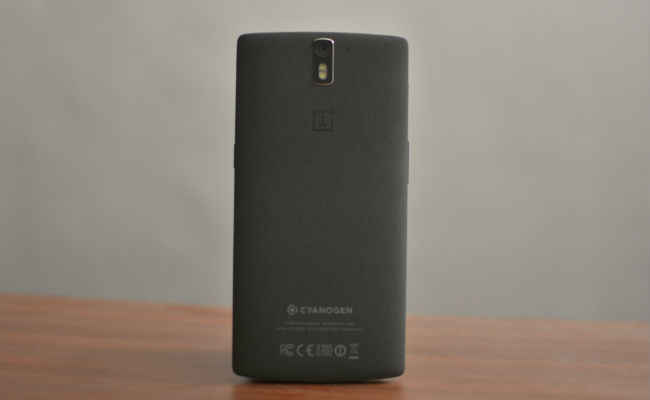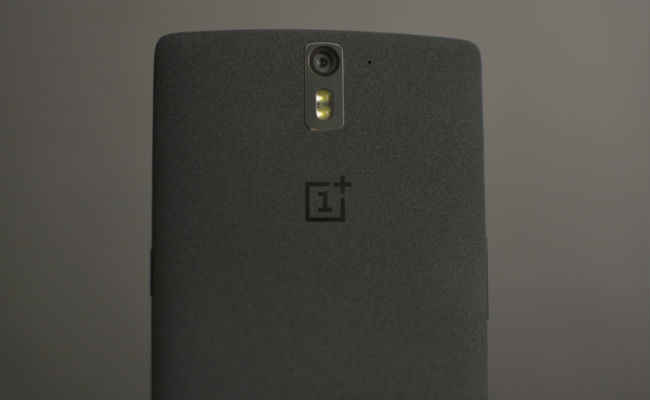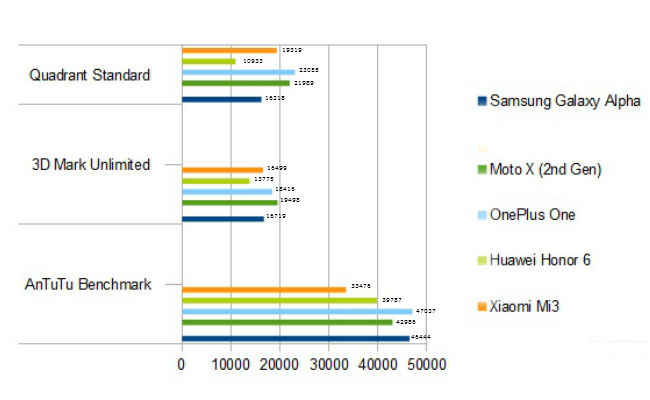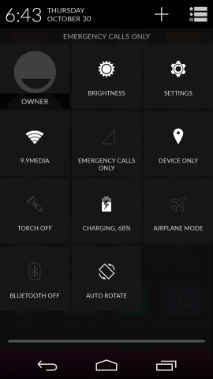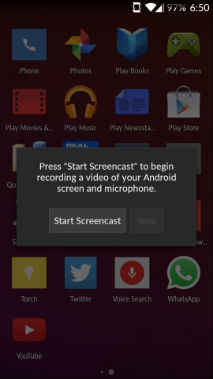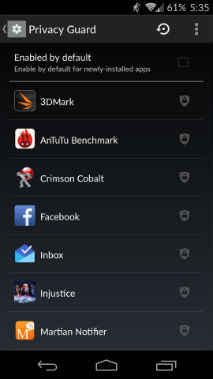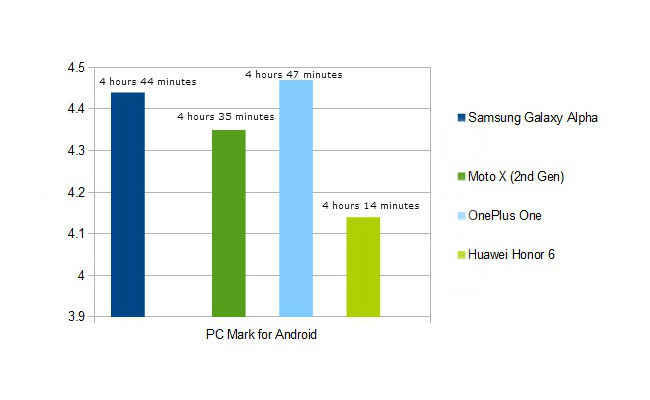OnePlus One Review : OnePlus One offers ‘Flagship Killer’ specs and pricing, but it needs to do more…
The OnePlus One is a cracker of a smartphone, but the rave reviews may have hyped it too much. The company does make some compromises in order to keep the price low and you may just feel you got less than you expected. It's still one of the best value for money smartphones you can buy today. CyanogenMod and the Sandstone design give it a very new overall feel and the device is a power user's dream since it comes pre-rooted. If you like phablets, then this is the best that you can ask for. All you need to do is get an invite.
Build and Design
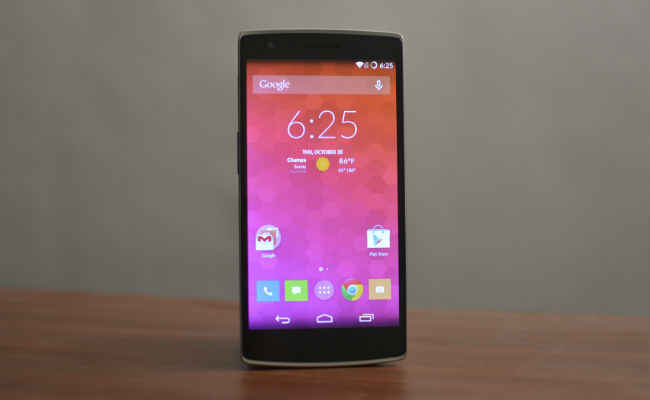
The OnePlus One belongs to the phablet category, so the size is expected, although you wonder if the bezel size on the top and bottom could have been cut some more. If you’ve seen the Oppo Find 7 earlier, then you would recognise this as exactly the same design. Nevertheless, the OnePlus One has some differentiating factors, with the biggest one being the Sandstone finish on the back. This gives a very unique feel to the device. Smartphones today have been stuck in a rut in terms of design. While polycarbonate plastic is the most common, higher end devices come with a touch of metal.
Motorola did something different with its wooden backs, but the Sandstone finish gives this device a completely unique feel. It doesn’t get scratched very easily and gives a nice new feel to the device, which is very premium.
The 5.5 inch display of course makes it big and the 8.9 mm thickness and 162 grams weight make it an overall bulky device. The OnePlus One is easily one of the biggest smartphones you can find right now and not for those who love compact phones. It’s a phablet if there ever was one.
The bar design looks quite good though, thanks to the rounded top and bottom. In addition, the metallic lining on the front, gives it a premium feel along with the back.
Display
The bigger a smartphone’s display, lesser the margin for error. The OnePlus One has a 5.5 inch full-HD display and it does well under sunlight and though it is a little too susceptible to fingerprints and smudges, I didn’t have any problems using this device outdoors. But like I said, the margin for error is low since things start sticking out at this size. The OnePlus One has a dull display compared to other full-HD smartphones. Perhaps one of the trade-offs the company had to make in order to keep the low price tag.
Overall, if you like big displays, then you will like the OnePlus One’s 1080p screen. The colour reproduction isn’t bad and CyanogenMod 11 looks good on it.
Performance
We’ve read so much about the OnePlus One till now that the expectations from this phone were massive. The Snapdragon 801 chipset inside performs as well on this phone as any other. While it does get hot when put through resource intensive games and some other tasks, I could easily get 30 minutes of gaming out of this phone at a stretch, before the effects of processor throttling kicked in. It heats up a lot though and was quite uncomfortable to hold after that. Also, it takes quite some time to cool down again.
Nevertheless, the 801 also ensures that the CM fork runs smoothly on the device. There were a few app crashes, but that was because of the unstable ROM and not the usual bad memory management issues. We got an update almost immediately after unboxing the device and the phone has been smooth enough since then.
In all, the performance is right up there with the flagship devices in the market and that is where the price of this device kicks in. If Xiaomi prices its Mi4 right, then it will be the only competitor to the OnePlus One in India. This phone is a true performance beast and hard as I tried, I couldn’t find any chinks in its armour that were worth mentioning.
The in-call volume is a little too low though and the company would do well to rectify this. Even with the volume turned up to max, there were often times when I had trouble hearing the person on the other end when I was outdoors. It is a phone afterall and bad call quality is frankly, just unacceptable. The loudspeaker isn't bad though and the two stereo speakers at the bottom aren't bad.
CyanogenMod 11S
A major differentiating factor in the OnePlus One is in the fact that it comes with CyanogenMod 11S out of the box. This gives the phone a very different and fresh feel compared to other Android smartphones. More importantly though, it means that your phone is already rooted, granting you super user privileges. This in turn makes the OnePlus One a power user’s dream.
Note: The phone doesn't come pre-rooted. The presence of CM allows for super user privileges, but you will still have to root this if you want to. Rooting doesn't violate the warranty on the OnePlus One.
The CM fork of KitKat offers customisability beyond any UI that other manufacturers provide right now. You can customise everything from the buttons to your icons, wallpapers and themes. The CM theme store allows you to download multiple theme packs and then combine different elements from them to make your phone look and feel just the way you want.
If you’ve read our MiUI review, you would know that we were quite impressed by how easy managing app permissions was in it. The same goes with the CM fork. You can go into Privacy and change various access privileges given to apps using the Privacy Guard option.
Another useful feature is the option to switch from capacitive buttons to on-screen home, back and multitasking keys. This would make sense especially if you’re comfortable with stock Android. Also, it is worth mentioning that icons on the default CM UI reek of material design, but look different than Google’s Lollipop design. You can also swipe from the top right to come to the quick settings drop down, instead of pressing the quick settings key or trying the two finger drag. This makes sense, considering the huge size of the smartphone.
There’s one problem though, CyanogenMod isn’t the stablest ROM you can find. We got an update almost immediately after unboxing the device, but there were some crashes that were most likely a result of an unstable ROM. As mentioned above, the processor performs well and memory management in KitKat is quite good, so the only reason we can think of is the ROM. The OnePlus One also has the 'ghost touches' issue (unresponsive screen), which many other users have noted earlier. The company had sent out an OTA update to fix it, but we still had to deal with that on our test unit. I'm not quite sure whether this is a software or hardware issue, but I'm going to lean towards hardware considering that the OTA update didn't solve it.
In general everyday usage though, the device was more than good enough and the UI was slick and fast (except the few times we just talked about). There are a lot of other options to go through as well. The heads up notifications for example, are a nice touch, but CM needs to refine it. You will most probably spend the first month just going through the various options in each menu.
Battery
In my recent review of the iPhone 6, I talked about how the device’s battery doesn’t support its exemplary performance. The iPhone has always been the best when it came to gaming, but never had the battery life to support it. Not the OnePlus One though. On a day of normal usage, with some light gaming, this device got me through the day with about 30-35% battery to spare. With my regular gaming, which is quite a bit, I still got through the day before the low battery warning flashed on the screen. Also, note that I always keep the screen brightness on my phones at max, which means the phone could have given me some more hours as well if I kept the brightness lower.
In our battery test, the device gave the same result as the iPhone 6, losing 11% battery. It doesn’t start losing battery as rapidly when you game on it though. This is most likely because the OnePlus One throttles down the CPU, while the iPhone 6 doesn’t seem to do so. It is worth mentioning though that Android phones like the LG G3 and Samsung Galaxy Note 4 with similar batteries but more intensive screens have better battery life, if only slightly.
If you’re looking for numbers, then the PC Mark for Android benchmark scores below should give you some perspective. While the Moto X (2nd Gen) is priced at Rs. 31,999, the Galaxy Alpha and Honor 6 are priced at Rs. 39,990 and Rs. 19,999 respectively.
Camera
While the 13 MP camera on the OnePlus One will be enough for those who don’t focus on photography a lot, it isn’t a stellar performer. Images taken under normal lighting seemed undersaturated and the auto-focus is slow. The camera lacks exposure control, which often ends up blowing out objects in images. Also, the focus stutters a lot when lighting conditions are uneven. The Xiaomi Mi3's 13MP camera is much better than this.
On the other hand, the OnePlus One has a very good 5 MP front camera, with a big field of view. Who would have known that this would also turn out to be a selfie phone right? Well, it is.
Also, the camera doesn’t do well with videos because of the lack of image stabilisation. The OnePlus One has digital image stabilisation, which is never good. So your 1080p videos will suffer from unstable hands. Just one of the corners to cut in order to keep the price down.
Bottomline
It’s hard to overlook the price of this smartphone, which makes it worth every paisa. There are a lot of reviews that have overlooked the shortcomings of the phone because of the price factor. So, if you’re planning to buy this phone then forget the reviews that you’ve read so far. The OnePlus One is definitely worth the price, especially if you want a phablet. But the phone does cut some corners for this, just like Xiaomi did for the Mi3 and will definitely do for the Mi4.
It's a cracker of a smartphone but OnePlus perhaps got a little late in starting its India operations. Chinese manufacturer Xiaomi will be tough competition for the OnePlus One and along with the Xiaomi Mi4, they make the two most intriguing devices in the market right now.

